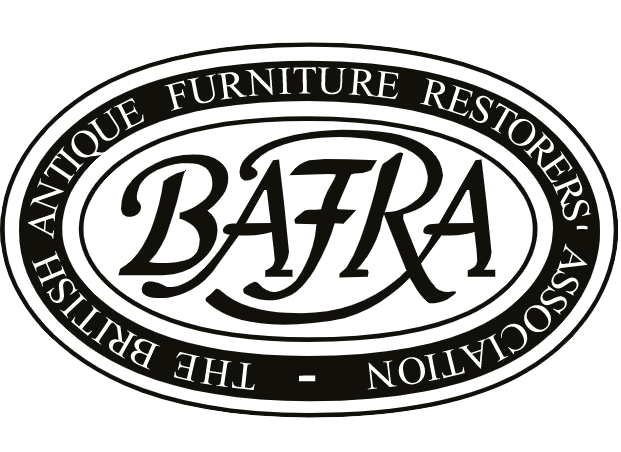
Antique Stringed Instrument Restoration by BAFRA Restorers
At BAFRA, we provide access to antique stringed instrument restoration and repair. Every member has been rigorously assessed and vetted. Our members are all established businesses that are fully accredited and work to the highest standards and ethics.
Antique Stringed Instrument Restorers at BAFRA
Restoring antique stringed instruments requires a delicate balance of craftsmanship, expertise, and respect for the instrument's historical value. Instruments such as violins, cellos, guitars, and lutes can be damaged over time due to ageing wood, exposure to environmental factors, and regular use. The restoration process aims to return these instruments to their original condition while preserving their sound quality and historical integrity.
The first step in restoration involves thoroughly assessing the instrument's condition. This may include examining the wood for cracks, warping, or separation, checking the neck and joints for stability, and assessing the condition of the strings, bridges, and tailpieces. For damaged or worn-out parts, BAFRA skilled restorers carefully repair or replace components, often using period-appropriate materials to match the original design. Cracks are sealed using specialised adhesives that maintain the wood's resonance, and the varnish or finish may be retouched to restore its appearance.
Sound quality is a primary focus of restoration, as the acoustics of antique stringed instruments are often tied to their age and craftsmanship. String tension, bridge placement, and neck alignment are adjusted to ensure optimal sound production.
Antique Stringed Instrument Restoration FAQs
What types of stringed instruments can be restored?
A variety of stringed instruments can be restored, including violins, violas, cellos, basses, guitars, lutes, harpsichords, and even early historical instruments like the cittern or mandolin. Each type requires specific knowledge and expertise due to variations in construction, materials, and design. Restoring these instruments involves repairing structural damage, preserving sound quality, and maintaining historical integrity, ensuring that the instrument retains its musical and aesthetic value for future generations of musicians and collectors.
How do you assess the condition of an antique stringed instrument?
Assessing the condition of an antique stringed instrument involves a thorough inspection of its structure and components. BAFRA restorers check the wood for cracks, warping, or separation, ensuring the body remains intact. The neck, joints, and soundboard are examined for stability. Hardware like bridges, tailpieces, and tuners are inspected for wear. Additionally, the varnish is evaluated for damage, and the instrument’s acoustics are tested to assess the integrity of the sound quality, ensuring optimal restoration.
Can the sound quality of an antique instrument be improved during restoration?
Yes, the sound quality of an antique stringed instrument can be improved during restoration, but the goal is often to preserve or enhance its original tonal characteristics. Adjustments such as re-aligning the bridge, optimising string tension, and correcting neck alignment can improve resonance and playability. However, restoring an antique instrument involves balancing sound quality with preserving its unique acoustics, ensuring that the tonal qualities shaped by age and craftsmanship are respected.
How are cracks or damage in the wood repaired?
Cracks or damage in the wood of an antique stringed instrument are repaired using specialised adhesives designed for wood conservation. BAFRA skilled restorers carefully align the crack and apply the adhesive, ensuring it bonds without affecting the wood's natural resonance. For larger or deeper cracks, additional support such as internal patches or braces may be added. Once the adhesive sets, the surface is smoothed, and the area is refinished to restore the instrument’s integrity and appearance.
Can the varnish or finish be restored?
Yes, the varnish or finish of an antique stringed instrument can be restored. BAFRA skilled restorers carefully remove any damaged or worn varnish, then reapply a new layer using period-appropriate techniques and materials. This process enhances the instrument’s appearance without affecting its acoustics. Restoring the finish also helps protect the wood from further environmental damage. The goal is to retain the instrument's original aesthetic while preserving its historical and tonal integrity.
Why choose a BAFRA-accredited member to restore antique stringed instruments?
Choosing a BAFRA-accredited member ensures your antique stringed instrument is handled by a highly skilled and qualified professional. BAFRA members adhere to strict conservation standards, using non-invasive, reversible methods to preserve the instrument's original craftsmanship and sound quality. Their expertise in restoring delicate instruments ensures that historical accuracy and acoustic integrity are maintained, protecting the value and longevity of your prized piece for future generations of musicians and collectors.
Find BAFRA Accredited Antique Stringed Instrument Restoration Specialists
All accredited, full members are required to have at least five years as a conservation-restoration professional (the average member today has 23 years of experience) and pass an exacting assessment on their skills, knowledge, and business credentials. Our members acknowledge the importance of continuous professional development to keep abreast of advances in knowledge, skills, and technical developments in antique stringed instrument restoration and repair.
Find BAFRA accredited antique stringed instrument restoration specialists near you by clicking the button below and entering your postcode.

